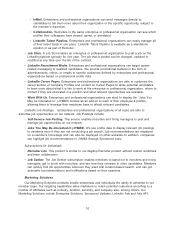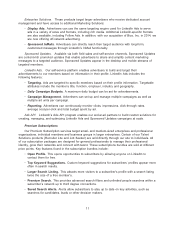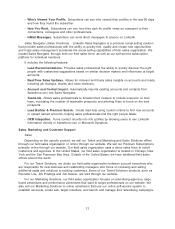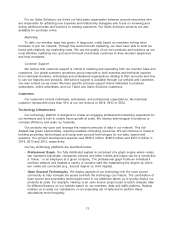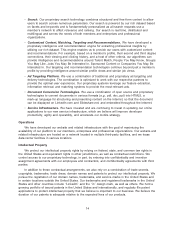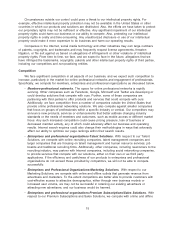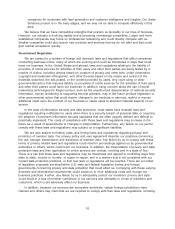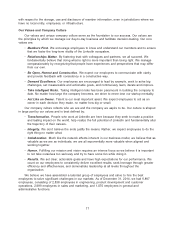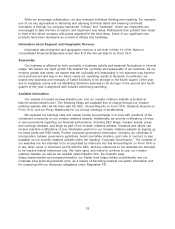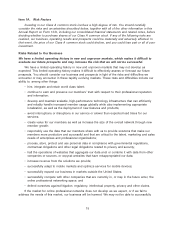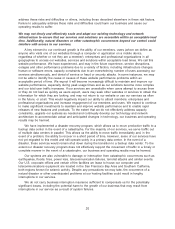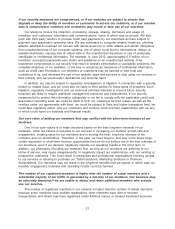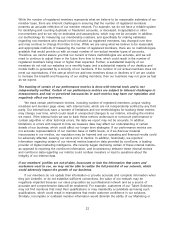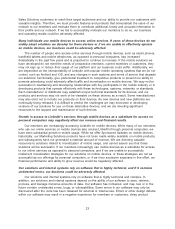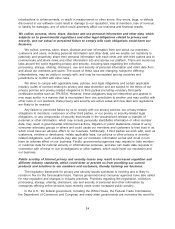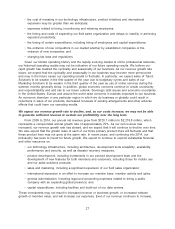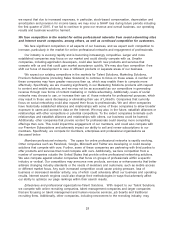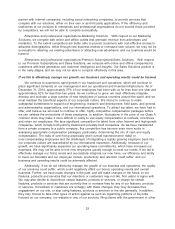LinkedIn 2014 Annual Report Download - page 21
Download and view the complete annual report
Please find page 21 of the 2014 LinkedIn annual report below. You can navigate through the pages in the report by either clicking on the pages listed below, or by using the keyword search tool below to find specific information within the annual report.Item 1A. Risk Factors
Investing in our Class A common stock involves a high degree of risk. You should carefully
consider the risks and uncertainties described below, together with all of the other information in this
Annual Report on Form 10-K, including our consolidated financial statements and related notes, before
deciding whether to purchase shares of our Class A common stock. If any of the following risks are
realized, our business, operating results and prospects could be materially and adversely affected. In
that event, the price of our Class A common stock could decline, and you could lose part or all of your
investment.
Risks Related to Our Business
We have a limited operating history in new and unproven markets, which makes it difficult to
evaluate our future prospects and may increase the risk that we will not be successful.
We have a limited operating history in new and unproven markets that may not develop as
expected. This limited operating history makes it difficult to effectively assess or forecast our future
prospects. You should consider our business and prospects in light of the risks and difficulties we
encounter or may encounter in these rapidly evolving markets. These risks and difficulties include our
ability to, among other things:
• hire, integrate and retain world class talent;
• continue to earn and preserve our members’ trust with respect to their professional reputation
and information;
• develop and maintain scalable, high-performance technology infrastructure that can efficiently
and reliably handle increased member usage globally while also implementing appropriate
localization, as well as the deployment of new features and products;
• avoid interruptions or disruptions in our service or slower than expected load times for our
services;
• create value for our members as well as increase the size of the overall network through new
member growth;
• responsibly use the data that our members share with us to provide solutions that make our
members more productive and successful and that are critical to the talent, marketing and sales
needs of enterprises and professional organizations;
• process, store, protect and use personal data in compliance with governmental regulations,
contractual obligations and other legal obligations related to privacy and security;
• halt the operations of websites that aggregate our data and/ or combine it with data from other
companies or sources, or copycat websites that have misappropriated our data;
• increase revenue from the solutions we provide;
• successfully adapt to mobile markets and optimize services for mobile devices;
• successfully expand our business in markets outside the United States;
• successfully compete with other companies that are currently in, or may in the future enter, the
online professional networking space; and
• defend ourselves against litigation, regulatory, intellectual property, privacy and other claims.
If the market for online professional networks does not develop as we expect, or if we fail to
address the needs of this market, our business will be harmed. We may not be able to successfully
19



